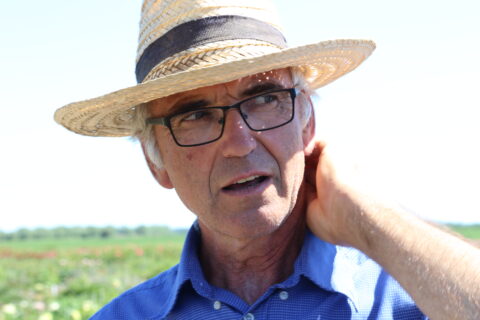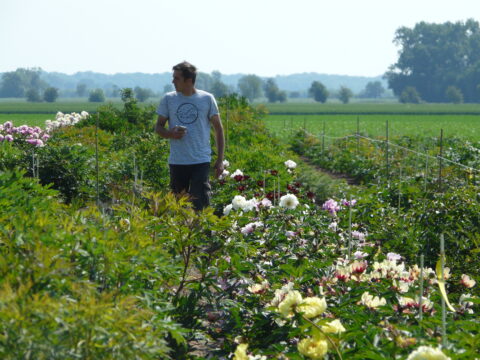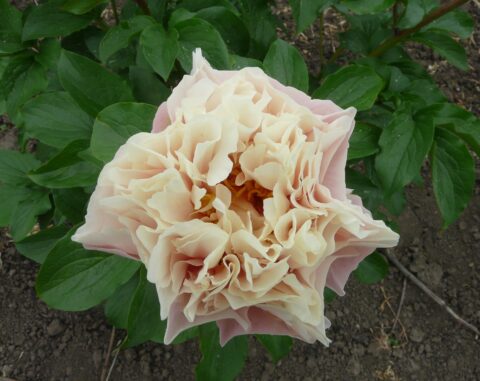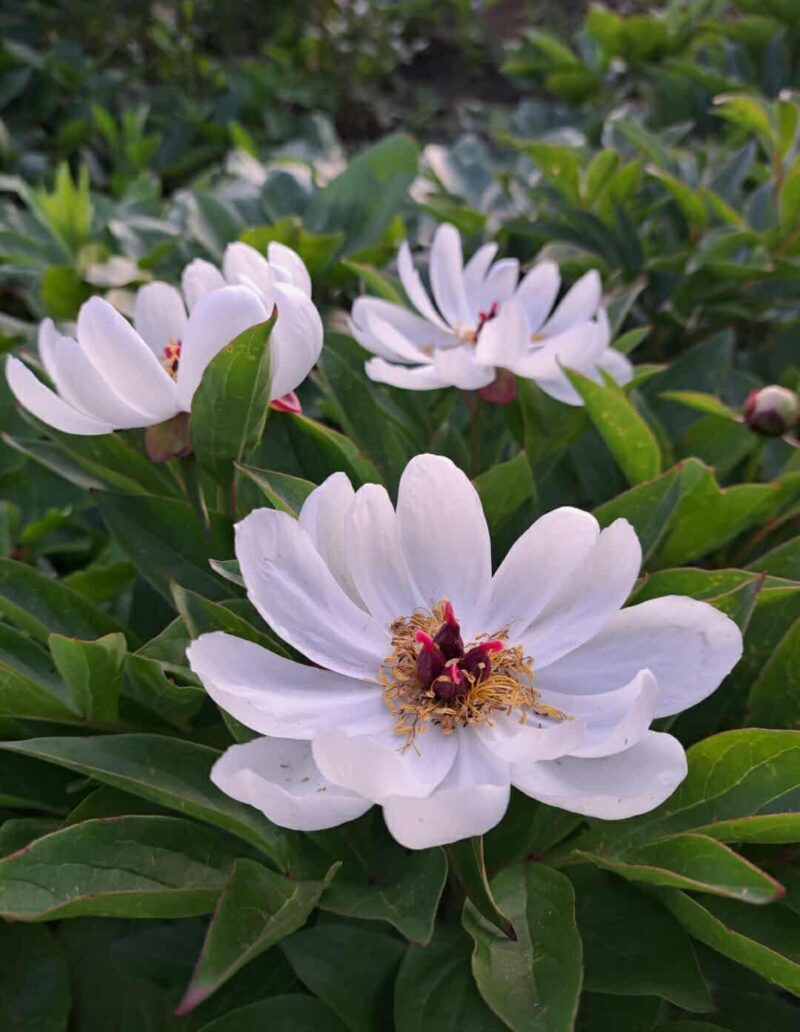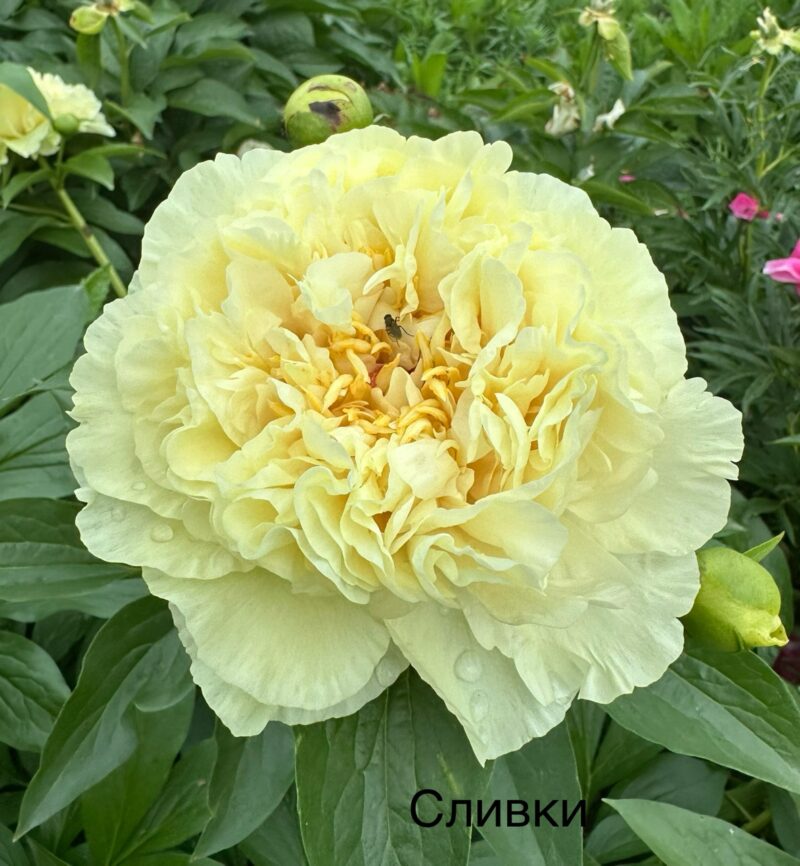Wolfgang and Angelika Giessler
Country:
Germany, Sachsen-Anhalt
Short biography:
Wolfgang Gießler: 68 years old, married, 3 children (Daniel, Anita, Juana)
Angelika Gießler: 67 years old
Daniel Gießler: 46 years old, married, 2 children (Jhonny and Edda) – Daniel took over the business on July 1, 2018
More information:
Peony hybridizers series
- Wolfgang Giessler
- Juana, Luna and Anita Giessler
- Daniel Giessler
How did you first get involved in peony hybridizing?
Around 2005, my father began pollinating Paeonia delavayi with a pollen mix (from herbaceous peonies). This resulted in ‘Yes we can’ (first bloom in 2009). For more details, see APS – Registered 2013.
After my parents discovered a white Paeonia tenuifolia (P. ten. White Pearl) among thousands of red ones in 2009, the APZ group (Arbeitsgemeinschaft PfingstrosenZüchtung (Working Group for Peony Breeding) – led by Dr. Wandelt from Quedlinburg) set the goal of breeding a white double-flowered tenuifolia.
Subsequently, my father pollinated P. ten. Rubra Plena, and in May 2021 (12 years later), the goal was achieved. There is also a P. ten. Alba Plena – with a hint of pink.
What was your starting material for your hybridizing?
Starting material: Paeonia tenuifolia ‘Rubra Plena’
We received Paeonia tenuifolia ‘Rosea Plena’ from Hans-Günther Maschke.
Other Paeonia tenuifolia seedlings were provided by Mr. and Mrs. Rieck.
What are your goals in hybridizing peonies?
For intersectionals and tree peonies, we particularly value: vigorous growth, flowers that rise above the foliage, abundant blooms, reliable flowering, and good health.
For herbaceous peonies: sturdy growth, beautiful color, reliable flowering, fragrance, and good health.
Simply put, a peony that makes us enthusiastic.
Do you mostly depend on open pollination or do you mostly make controlled crosses?
| 100% open | 50/50 | 100% controlled |
How large is your hybridizing program?
It varies greatly, depending on our ideas and available time. Time is often limited, as we also run a farm with arable land. My brother, Daniel Gießler, and his son, Jhonny Gießler, are farmers.
This year, we didn’t do any crossbreeding. But the bees and the wind are working well for us. Approximately 500 seeds were sown.
Some seeds were sold to Finland in 2025. Some seeds were delivered to the Swedish Peony Society in 2024.
Do you have any plants in the market?
Yes, we sell our peonies ourselves through our online shop.
Can you describe a few of your plants that you consider the best or most beautiful and which are available now?
‘Big Jhonny’ is cream-colored with side buds and a sprawling growth habit; it produces many seeds.
‘German Medusa’ has numerous flowers, many side buds that extend the flowering period, and a variety of flower shapes.
‘Aron’ is low-growing and bee-friendly.
Big Jhonny (Giessler, 2016). Parentage uncertain, most likely ‘Garden Peace’ by unknown pollen (possibly ‘Lemon Chiffon’ by unknown pollen). First bloomed 2008, first propagated 2009. Large SEMI-DOUBLE flowers to 7½ inches (19 cm), usually 3 per stem, the secondary flowers being somewhat smaller and more variable in form. Three rows of pale pink guard petals; well rounded. Inner petals creamy-apricot; frilled and ruffled. Center of pollen-bearing stamens and pale gray-green carpels. Carpels variable in number (ranging from 2-5) and moderately hairy, having red-purple stigmas. Produces seeds. The staminodal disc, in herbaceous peonies normally a ring of protuberances at the base of the carpels, is here developed to extend about a quarter the length of the carpels, suggestive of a rudimentary sheath as seen in woody peonies where it often entirely encloses the carpels; colored red-purple, same as the stigmas. Upright self-supporting growth with stems to 30 inches (76 cm). Foliage emerges with coppery leaves turning to rich dark green as it matures. Very large, broad leaves, the mature plant much resembling ‘Garden Peace’ in leaves, stems and buds. Named for the originators’ second grandchild.
- German Medusa (Giessler, 2018)
German Medusa (Giessler, 2018). P. delavayi x (lactiflora mix). First bloomed 2015, first propagated 2017. Predominantly SINGLE but some flowers have some stamens transformed to staminodes and some to petalodes. Flowers are small, 3½ inches (9 cm) in size, but what they lack in size they make up for in number, having 4-9 blooms per stem. Color is a dark rich purple red (RHS 59A). Sheath color is the same. Average of 5 carpels, yellow-green, and smooth. Stigmas purple-red and feathered. Pollen bearing stamens. Some fragrance. Mature plant height to 40 inches (100 cm) with a spreading plant habit to 55 inches (140 cm). Healthy foliage.
- Aron (Giessler, 2022)
Aron (Giessler, 2022). Lemon Chiffon x The Mackinac Grand. Registered in 2022 with the APZ in Germany. Coral-Salmon-Apricot color. Fades to a lighter shade as the flowers age. Flowers close like The Mackinac Grand. Foliage resembles that of Lemon Chiffon. Semi-double, 15 cm diameter, no sidebuds. Fragrant, blooming time mid to late May. Height 60 cm. Sturdy. Fertile. Named after the fourth grandchild of Wolfgang and Angelika Gießler.
Within your current seedlings, what are the most promising ones?
‘German Smile’ – elegant appearance, apricot, many seeds, sturdy
‘Nice to meet you’ – stunning color, sturdy, low-growing
‘Diva Ziva’ – sturdy, vibrant flower color, bee-friendly
‘Grosswesir’ – large, vibrant flowers, 25 cm in diameter
‘Luna Chatora’
‘Stern Tala’
Are you in contact or working together with other peony hybridizers?
Irmtraud and Gottlob Rieck, Dr. Werner Wandelt (best teacher when it comes to peony breeding), Steffen Schulze, Matias Krieger, Hans-Günther Maschke, Prof. Hans-Dieter Warda, Dr. Volker Lerbs, Rene Gämperle, Vogt/Barth (Switzerland), Riviere, Ruud Warmerdam…
Do you have unregistered plants that are not good enough to introduce but have something ‘special’?
Of course, there are always some plants that aren’t worth it. For example, we sort out perennials whose flowers are lying on the ground. We haven’t kept hybrid plants so far, as we would simply end up with too many seedlings.
Name a few peony varieties from other hybridizers which you especially like?
‘Spellbound (Irvine/Sutherland, New Zealand): extremely vigorous growth, beautiful vibrant color
‘Play with Fire’ (McFarlane, New Zealand): vigorous growth, fast-growing, very striking flowers from a distance
‘Rosenrot’ (Rieck): stunning color contrast between foliage and flowers, robust growth
‘Aquila’ (Nate Bremer, USA): beautiful ruffled flowers with a unique color
‘Quedlinburg Harlekin’ (Dr. Wandelt): unique color display in the bloom (Dr. Wandelt is the head of the APZ)
‘Zlaticko’ (Seidl, USA /Westland, Netherlands): superb fullness, nicely compact at 60-65 cm
‘Madame de Verneville’ (Crousse, France): a delightful rose fragrance and a long blooming period thanks to numerous side buds
‘Copper King’ (Nate Bremer, USA): stunning color, abundant blooms, very healthy plants
‘Fuchsia Ruffles’ (Seidl, USA): vibrant flower color, very healthy plants
Final question. Any remarks or suggestions you may have…
We were able to work well with this survey 🙂
Best regards, Anita Gießler
E-mail of this person is known to the author. If you want to contact this hybridizer, we can forward your message.

